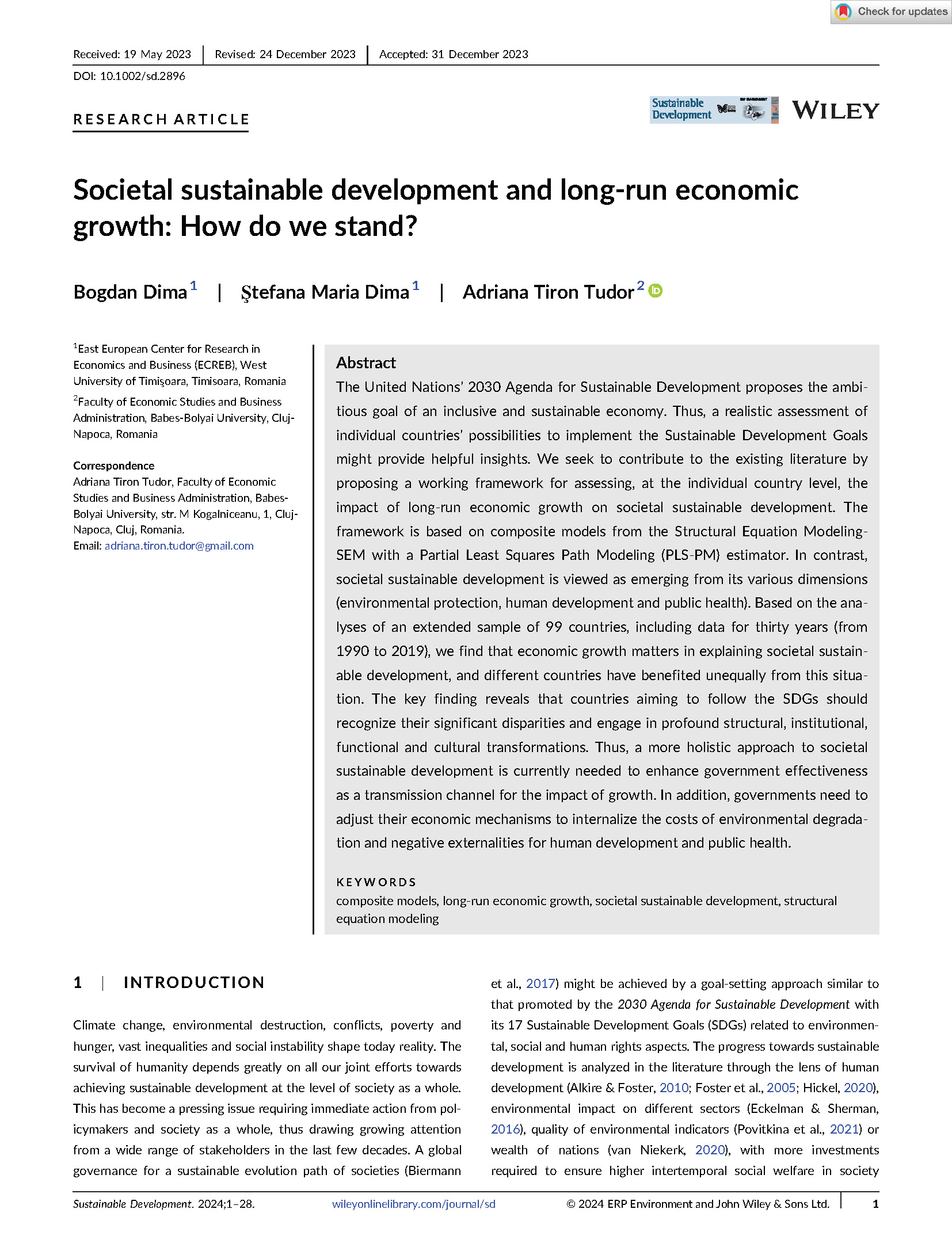|
|
|
Dima, B., Dima, S.M. & Tiron-Tudor, A. (2024) Sustainable Development [Domenii conexe, Q1]
Autor:
Cristina Alexandrina Stefanescu
Publicat:
19 Ianuarie 2024
Dima, B., Dima, S.M. & Tiron-Tudor, A. (2024) Societal sustainable development and long-run economic growth: How do we stand?. Sustainable Development, 32(4), 4222-4249.
DOI: https://doi.org/10.1002/sd.2896
✓ Publisher: Wiley
✓ Categories: Development Studies; Green & Sustainable Science & Technology; Regional & Urban Planning
✓ Article Influence Score (AIS): 1.460 (2023) / Q1 in Regional & Urban Planning; Development Studies; Q2 in Green & Sustainable Science & Technology
Abstract: The United Nations' 2030 Agenda for Sustainable Development proposes the ambitious goal of an inclusive and sustainable economy. Thus, a realistic assessment of individual countries' possibilities to implement the Sustainable Development Goals might provide helpful insights. We seek to contribute to the existing literature by proposing a working framework for assessing, at the individual country level, the impact of long-run economic growth on societal sustainable development. The framework is based on composite models from the Structural Equation Modeling-SEM with a Partial Least Squares Path Modeling (PLS-PM) estimator. In contrast, societal sustainable development is viewed as emerging from its various dimensions (environmental protection, human development and public health). based on the analyses of an extended sample of 99 countries, including data for thirty years (from 1990 to 2019), we find that economic growth matters in explaining societal sustainable development, and different countries have benefited unequally from this situation. The key finding reveals that countries aiming to follow the SDGs should recognize their significant disparities and engage in profound structural, institutional, functional and cultural transformations. Thus, a more holistic approach to societal sustainable development is currently needed to enhance government effectiveness as a transmission channel for the impact of growth. In addition, governments need to adjust their economic mechanisms to internalize the costs of environmental degradation and negative externalities for human development and public health.

inapoi la stiri  vezi evenimentele
vezi evenimentele  home
home 
|